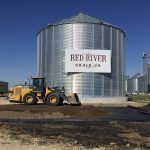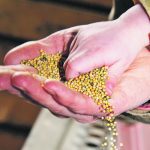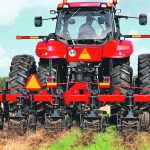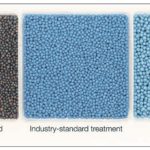Tag Archives Around The Farm

New concrete elevator tumbles on opening day

Floating bins for the win

What seed growers do when they need to grow
Businesses identify essentials and find creative solutions to rebuilding or renewing their yards and facilities
An aging seed cleaning plant forced the Watson family to choose between getting out of the seed business or looking at building a facility. The family have been seed growers since the 1960s but investing in a new seed plant was a big decision, said Mark Watson of Watson Seeds. “It was getting to the […] Read more
Heavy haulers headed to frigid south
Case IH engineers outfit three of the company’s Quadtracs for one of the harshest environments on earth
Three Quadtrac tractors modified for extreme cold operations are being delivered to the Australian government for service in Antarctica. The Australian Antarctic Division will use the tractors for general sled towing, heavy vehicle recovery, cargo transport from Casey to Wilkins and maintenance on the Wilkins Blue Ice Runway by pulling a 90-tonne roller and scraper. […] Read more
Rebooting the farm safety message

Even flat fields can have variability
You can have a wet depression at the top of a hill and a low-elevation hill at the bottom of a slope, all in one field
Understanding the intricate chemical and physical properties of a specific spot of cropland lets you feed that spot the nutrients it requires to fully optimize productivity and maximize your profit. As we know, agronomists use the word “optimize” rather than “maximize” when talking about yield. Extricating every last bushel from a specific zone can be […] Read more
Strip tillage: still stuck in the middle
Reasons why farmers haven’t been more accepting of strip tillage include weather and a reluctance to change
There was a time, in the 2000s, when strip tillage was promoted as a middle ground between conventional tillage and no-till. But much like the politics of the last 10 years, there aren’t many people who reside in the middle. Most folks are in one camp or the other. That’s possibly why strip tillage never […] Read more
Seed treatment offers dual pest protection
Corteva’s latest fungicide covers disease and insects such as airborne blackleg, cutworms and flea beetles
A new active ingredient called Lumiscend that Corteva Agriscience offers in its LumiGEN fungicide package protects canola from blackleg fungus including its airborne spores. Seed treatments that prevent blackleg-contaminated canola seed from starting an infection have been around for a long time but they offered no protection to seedlings that get infected in the field. […] Read more
Coating creates consistent seed size for canola-by-planter

Big wind
Engineering and planning can save grain storage bins from wind damage, but sometimes the only options are insurance or possibly repair.
Early evening, Aug. 13, Kelvington, Sask: A 160 km/h wind ripped through Betty Clark’s bin yard and destroyed a dozen bins with an estimated replacement value of 1.2 million dollars. Two bins remained undamaged, but the blast also took out the shed and electrical building. Preparations for harvest were just beginning that evening. It was […] Read more




